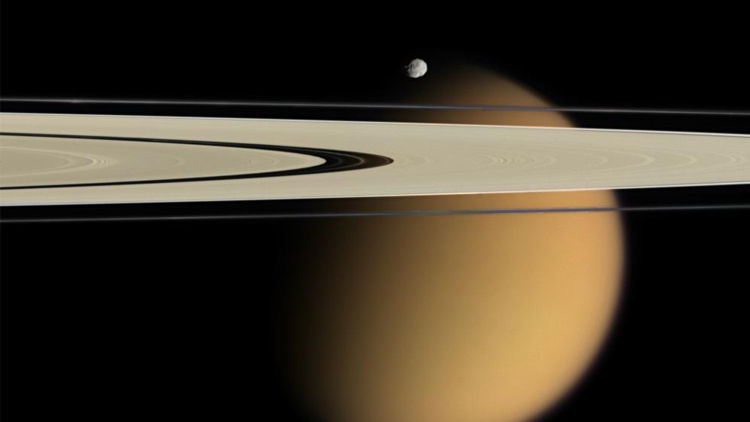
A moon is an object in space. It orbits a host planet. Earth has one moon. Some planets do not have any moons. Others, like Saturn and Jupiter, have many moons. Saturn is the “moon king” among the planets in our solar system. The ringed planet stole the title from Jupiter when sixty-two additional moons were discovered. Saturn now has a total of one hundred forty-five known moons. That’s more than all the other planets’ moons put together!

Saturn’s largest moon, Titan, and a smaller moon are seen outside the planet’s rings.
Scientists used an advanced telescope to detect the new moons around Saturn. The scientists describe the new moons as “irregular moons.” Irregular moons follow distant, elliptical orbits around their host planet. Irregular moons are small. They clump together in groups. There are three moon groups orbiting Saturn. Moons in the Norse group move in the opposite direction of Saturn’s rotation. Moons in the Gallic and Inuit groups orbit in the same direction as Saturn’s rotation. Scientists believe the small moons may be from a larger moon that broke apart millions of years ago.
What Can You Do? Would you like to use a telescope to search for things in space? You might see some of Saturn’s moons!
Photo Credit: (t)Photodisc/Alamy Stock Photo, (b)NASA Jet Propulsion Laboratory (NASA-JPL)



